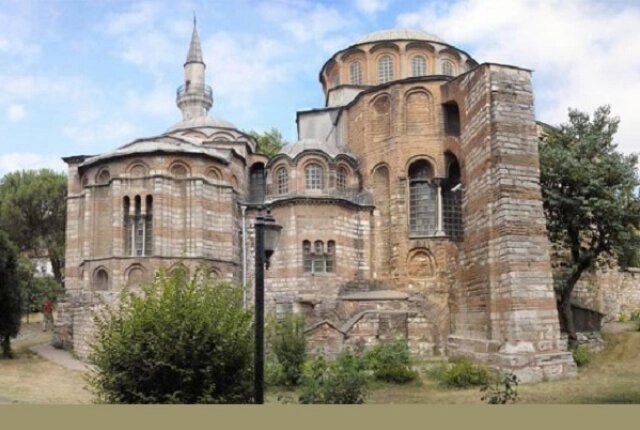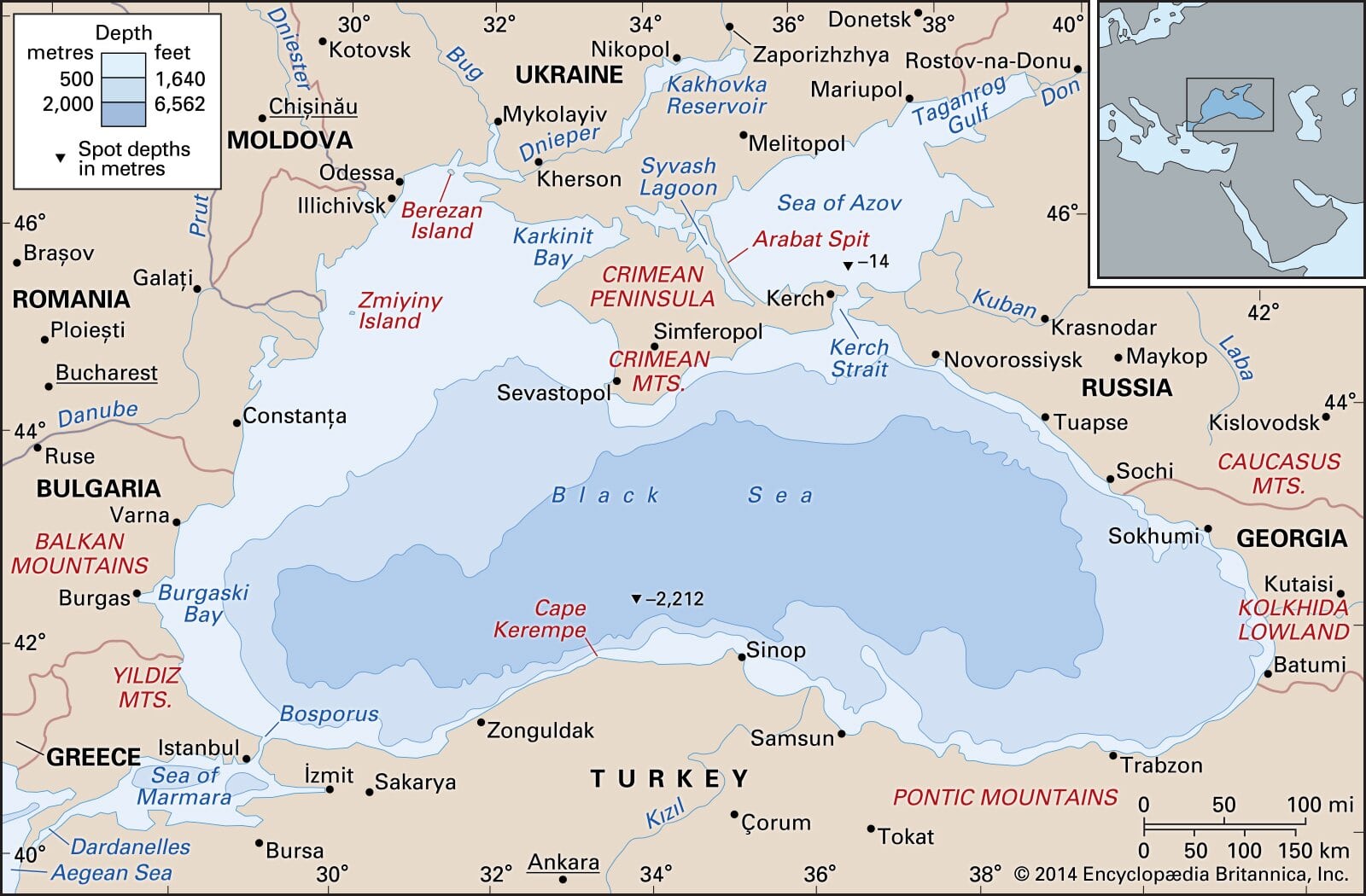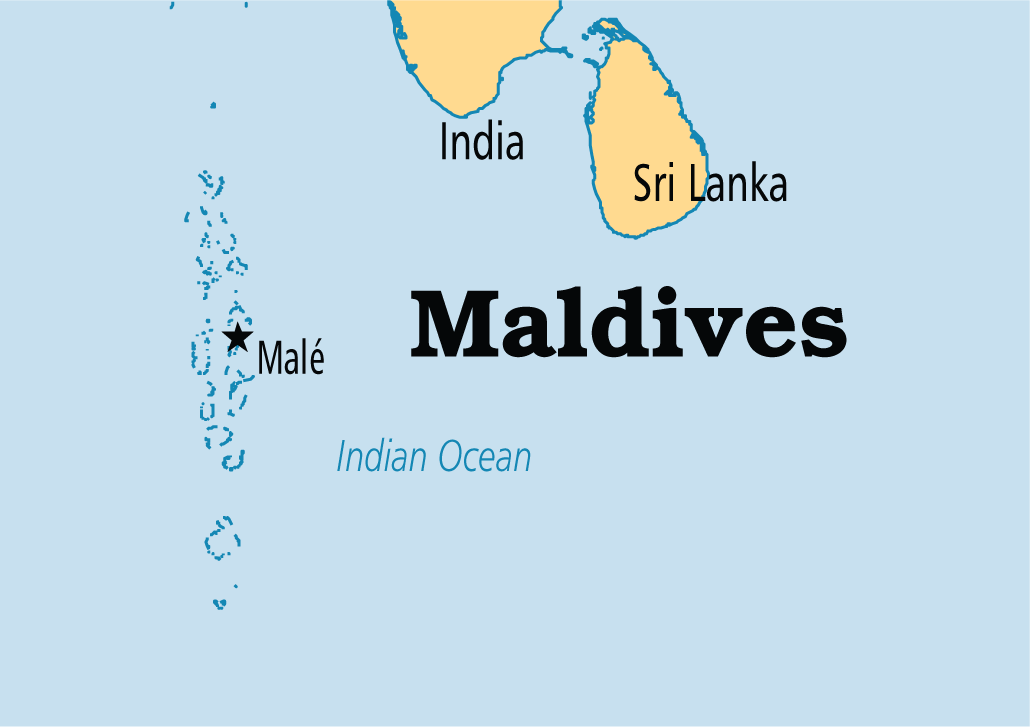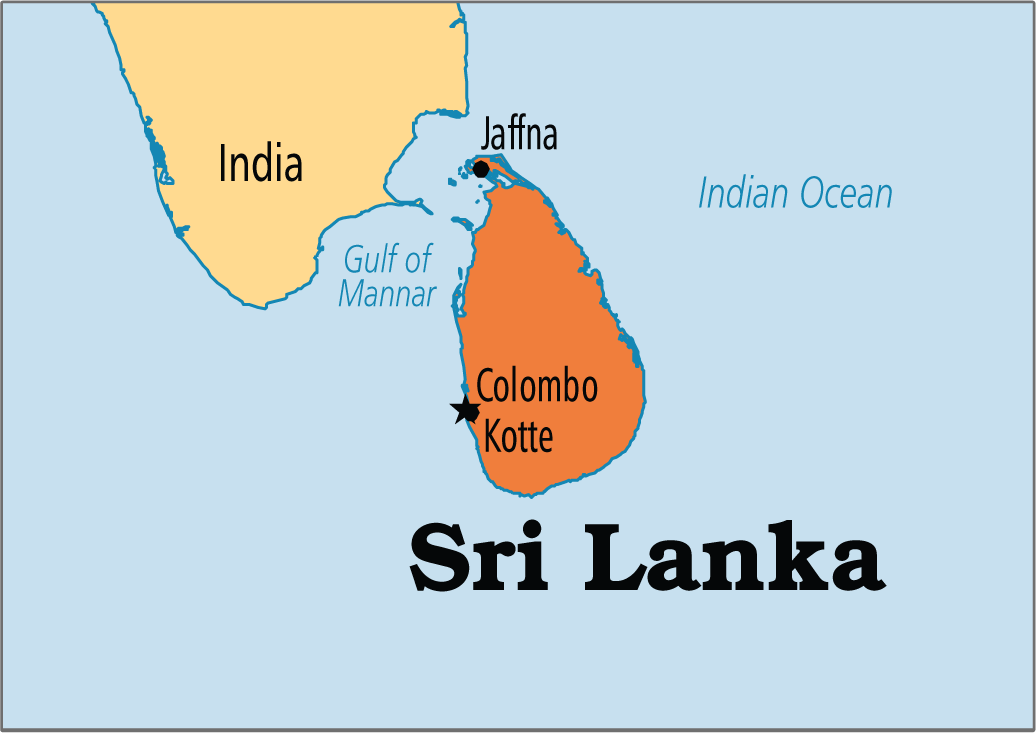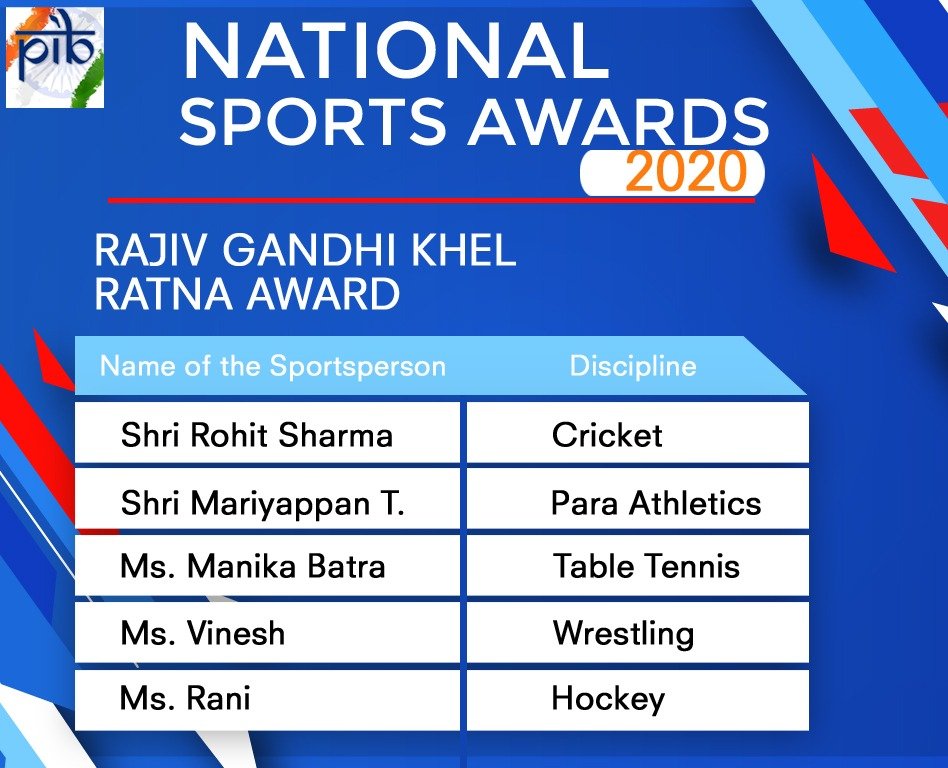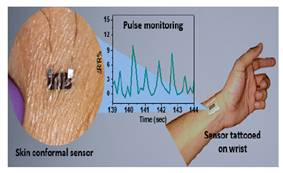Weakening Pakistan-Saudi Arabia Relations
Why in News
Recently, a delegation led by Pakistan Army Chief visited Saudi Arabia but were denied a meeting with Crown Prince Mohammed bin Salman (MBS).
- It highlights the rift between Pakistan and Saudi Arabia in general and specifically over the issue of Jammu and Kashmir.
Key Points
- Saudi’s Changing Perspective on India:
- Saudi’s increasing friendly and supportive nature towards India has been a gradual process under Crown Prince MBS because he wants to diversify Saudi’s heavily oil-dependent economy and sees India as a valuable partner in the region.
- Saudi Arabia is India’s fourth-largest trade partner (after China, the USA and Japan) and a major source of energy.
- India imports around 18% of its crude oil requirement from Saudi Arabia which is also a major source of LPG for India.
- With India stopping oil imports from Iran due to the threat of sanctions by the USA, the importance of Saudi Arabia increases even more.
- Increasing China Factor:
- Pakistan and China call themselves “all-weather allies” and “iron brothers”.
- China has supported Pakistan on the Kashmir issue, raising it at the United Nations Security Council thrice, over the last year.
- China has also emerged as Pakistan’s biggest benefactor through its funding of the China-Pakistan Economic Corridor (CPEC).
- Originally valued at USD 46 billion, China’s commitment to Pakistan now stands at USD 62 billion.
- Saudi Arabia has also invested in CPEC projects, to the tune of USD 10 billion but Pakistan now seems more interested in Beijing for both diplomatic and economic support.
- Pakistani leaders’ visits to China play an important role in further strengthening the Pakistan-China All-Weather Strategic Cooperative Partnership.
- Implications for India:
- India has favoured and supported the Arab world and has worked the diplomatic levers through high-level visits and open opportunities for investment and business.
- India has been closely noticing the developments between Pakistan and Saudi Arabia but has not said anything publicly.
- Saudi’s silence on the issues of Jammu and Kashmir and the CAA-NRC has also emboldened India.
- Closer ties between China and Pakistan are worrying for India, especially during the ongoing standoff but with Saudi Arabia’s support, India may have leverage over Pakistan.
Saudi Arabia and Pakistan Relations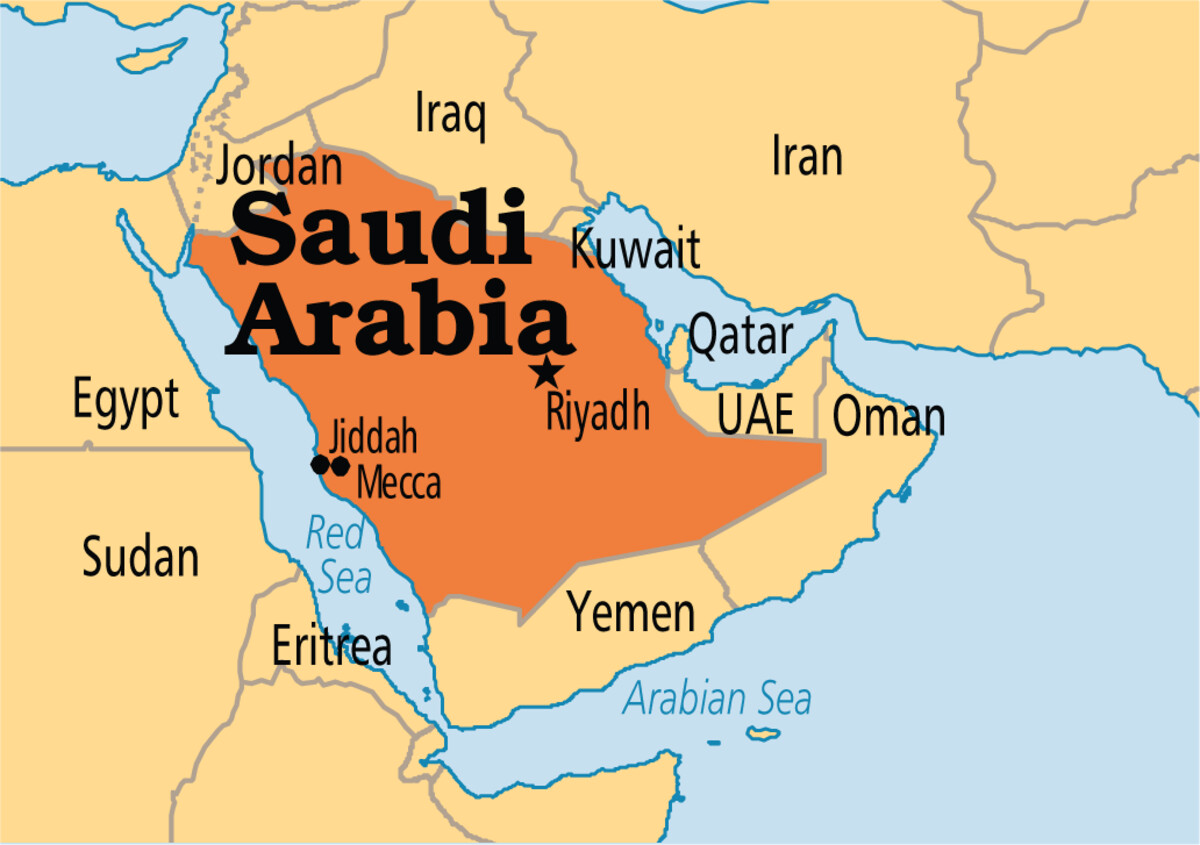
- History of Cooperation and Support:
- The relationship was most prominent during the 1971 war between India and Pakistan when Saudi Arabia is also reported to have transferred arms and equipment to Pakistan.
- Saudi held that Indian actions were “treacherous and contrary to all international covenants and human values” and found no justification for the Indian aggression except “India’s desire to dismember Pakistan and tarnish its Islamic creed”.
- Post-war, Saudi Arabia consistently supported the call for the return of Pakistan’s prisoners of war and for dropping the Dhaka Trial against them. It also gave loans to Pakistan enabling it to buy arms worth about USD 1 million by 1977.
- Saudi oil and dollars have kept Pakistan’s economy afloat after sanctions following the nuclear tests.
- Saudi has provided oil on deferred payments to Pakistan whenever it ran into economic difficulty.
- Saudi’s funding of madrasas has led to their growth and spread which in turn has given rise to religious extremism.
- In 1990, Pakistan sent its ground forces to defend Saudi Arabia against Iraq’s invasion of Kuwait.
- The relationship was most prominent during the 1971 war between India and Pakistan when Saudi Arabia is also reported to have transferred arms and equipment to Pakistan.
- Emerging Differences:
- Pakistan lobbied with the Organisation of Islamic Conference (OIC) for criticising the Indian move of revoking Article 370 in Jammu and Kashmir but statements by Saudi Arabia and the UAE were not harshly critical of India.
- Pakistan has tried to rouse the sentiments among the Islamic countries, but only Turkey and Malaysia have publicly criticised India.
- The alignment over Kashmir at the OIC crystallised since 1990 when the insurgency in Jammu and Kashmir began and since then, it has regularly issued statements on the issue.
- Pakistan has accused Saudi of failing to deliver on the Kashmir cause and OIC for not playing a leadership role in backing Pakistan against India.
- In 2015, Pakistan’s Parliament decided not to support the Saudi military effort to restore an internationally recognised government in Yemen.
- In February 2019 after the Pulwama terror attack, Saudi Arabia and the UAE, along with the USA, put in efforts on the release of the Indian Wing Commander Abhinandan who was captured by Pakistan.
- Saudi Arabia angered by Pakistan’s accusations demanded the return of the USD 3 billion loan and refused to sell oil on deferred payment. Pakistan immediately returned USD 1 billion, displaying the rift.
- In November 2018, Saudi announced a USD 6.2 billion loan package for Pakistan which included USD 3 billion in loans and an oil credit facility amounting to USD 3.2 billion.
- Pakistan is unable to pay the next tranche which seems difficult given the current economic situation and to make things worse, Saudi has refused to take part in Pakistan’s patch-up exercise.
- Pakistan’s efforts to please Turkey and Malaysia have also angered Saudi Arabia because Turkey has been trying to position itself as the new leader of the Muslim world, challenging Saudi Arabia’s long-held position.
- Pakistan lobbied with the Organisation of Islamic Conference (OIC) for criticising the Indian move of revoking Article 370 in Jammu and Kashmir but statements by Saudi Arabia and the UAE were not harshly critical of India.
Way Forward
- Saudi Arabia does not want conflict and regional instability and it has made it clear that it values economic opportunities, which is why it is not involving in the Kashmir issue in India or the terrorism issue in Pakistan.
- For India, it is important that the Pakistan-China and the Pakistan-Saudi axes are not fused together at the moment and it is not a Saudi-Pakistan-China triangle. Rest of it and the future of these layered relations depends on how India leverages the situation.
Chora Museum and New Gas Field: Turkey
Why in News
Recently, the Turkish President reconverted the Chora museum into a mosque. This is the second museum after Hagia Sophia to be converted into a mosque. Turkey has also found a new gas field in Black Sea.
Key Points
- Chora Museum:
- It was built initially as a church in 534 AD, during the early Byzantine period.
- In the 11th century, its internal walls, pillars and domes were covered with mosaics and frescoes showing scenes from biblical stories.
- After the conquest of Constantinople (capital city of the Roman Empire) by the Ottomans (1453), the church was seized and turned into a mosque in 1511.
- In 1945, it was converted into a museum.
- Chora is also known as Kariye in Turkish and the mediaeval Church of the Holy Saviour in Chora.
- Reason:
- The reconversion can be seen as Turkish President’s pro islamic policies, where he emphasises Turkey’s Ottoman history and domestic achievements over Western ideas and influences.
- By adopting pro Islamic policies the Turkish President aims to become leader of the Muslim world.
- The Turkish President has also taken anti-India positions especially on Kashmir to bolster its own position in the Muslim world.
- It can also be seen as a counter to USA’s recognition of Jerusalem as the capital of Israel.
- Jerusalem which has a significant population of Arab-muslims who are becoming more and more hostile because of the USA's recent stand on Israel-Palestine issue. This step of conversion of mosques would gain support of Arab countries for Turkey.
- Gas Field in Black Sea:
- Recently, Turkey has found its biggest ever (a 320 billion cubic metre) natural gas field discovery in Black Sea. The gas field will become functional in 2023.
- Turkey is determined to become a net energy exporter. The discovery has a potential to transform Turkey’s dependence on Russia, Iran and Azerbaijan for energy imports.
- Currently Turkey is having a chronic current account deficit, any reduction in Turkey’s energy import bill would boost its finances. It will also help the Lira (Currency of Turkey) to recover against the dollar.
- Currently Turkey is also having strained relations with its neighbour Greece over exploration of natural resources in Mediterranean sea.
India Announces Package to Maldives
Why in News
India has committed to Maldives a five-pronged package including air, sea, intra-island and telecommunications to help it deal with the economic impact of the Covid-19 pandemic.
Key Points
- The package includes:
- Greater Malé Connectivity Project (GMCP)
- A financial package consisting of a grant of 100 million USD and new line of credit of 400 million USD.
- This will be the largest civilian infrastructure project in Maldives, connecting Malé (the capital) with three neighbouring islands — Villingili, Gulhifalhu (where a port is being built under Indian line of credit) and Thilafushi (new industrial zone) – by construction of a bridge-and-causeway link.
- This will boost economic activity, generate employment and promote holistic urban development in the Malé region.
- Direct Cargo Ferry Service: It will be run between India and Maldives.
- The service is expected to enhance sea connectivity and provide predictability in supplies for importers in Maldives and exporters in India.
- Air Travel Bubble Between India and Maldives: This will facilitate movement of people for employment, tourism and medical emergencies.
- Maldives is the first neighbouring country of India with which an air bubble is being operationalised.
- Quotas for Supply of Essential Commodities: This was renewed for 2020-21. The commodities include food items as well as river sand and stone aggregates to assure food security, and supply of essential construction items.
- Financial Aid: In addition a financial aid of 250 million USD will be provided to Maldives by India.
- Greater Malé Connectivity Project (GMCP)
- Impact on India-Maldives-China
- The Indian aid is being appreciated and contrasted with the previous expensive commercial loans to Maldives by China which are being termed “debt-trap diplomacy” of China, wherein China intentionally extends excessive credit to another country with the intention of extracting economic or political concessions from the debtor country.
- The GMCP is also being compared to the Chinese built Sinemale Friendship bridge connecting Male to two other islands as it will be much bigger than the latter.
- The India-Maldives relationship suffered a setback when Maldives entered into a Free-Trade Agreement (FTA) with China in 2017.
- However with the election of a new pro-India government in Maldives, the relationships have improved and Maldives is also considering pulling out of the FTA with China.
- Since September 2018, India and Maldives have seen a number of bilateral visits.
- India’s Prime Minister visited Maldives to attend the swearing-in ceremony of President Solih.
- Maldives President also visited India in December 2018.
- The Home Minister of Maldives met Indian Home Minister on 21st February, 2020.
- At present, India-assisted projects in the region include water and sewerage projects on 34 islands, reclamation projects for the Addl island, a port on Gulhifalhu, airport redevelopment at Hanimaadhoo, and a hospital and a cricket stadium in Hulhumale.
- India had also announced a 800 million USD Line of Credit to Maldives in December 2018.
Significance of Maldives for India
- Geographical: Maldives’ proximity to the west coast of India.
- Maldives is barely 70 nautical miles away from Minicoy -the southernmost island of Lakshadweep.
- Lakshadweep group is separated from Maldives by Eight Degree Channel.
- It is situated at the hub of commercial sea-lanes running through Indian Ocean. More than 97% of India’s international trade by volume and 75% by value passes through the region.
- History: India and Maldives share ethnic, linguistic, cultural, religious and commercial links.
- India was among the first to recognize Maldives after its independence in 1965 and later established its mission at Male in 1972.
- Operation Cactus: In 1988, in response to a request from the Maldives, India activated Operation Cactus to deploy its military and ensure regime continuity in Male.
- Defence: Its potential to allow a third nation’s naval presence in the area.
- Since China’s naval expansion into the Indian Ocean, Maldives' significance has steadily grown and now it’s at the heart of international geopolitics.
- India provides the largest number of training opportunities for Maldivian National Defence Force (MNDF), meeting around 70% of their defence training requirements.
- ‘Ekuverin’ is a joint military exercise between India and Maldives.
- Geo-political: Maldives is an important aspect of India’s ‘Neighbourhood First’ policy.
- ‘India First’ has been a stated policy of the Government of Maldives.
- Maldives is a member of the South Asian Association for Regional Cooperation (SAARC) and the South Asia Subregional Economic Cooperation (SASEC)..
- Trade and Tourism: India is Maldives’ 4th largest trade partner after UAE, China and Singapore. In 2018, India was the 5th largest source of tourist arrivals in Maldives.
- In 2018, India was the 5th largest source of tourist arrivals in Maldives.e.
- India and Maldives signed a trade agreement in 1981, which provides for export of essential commodities.
- India-Maldives bilateral trade now stands at US$ 288.99 Million heavily in favour of India.
- Disaster Management: The Government of India has provided large-scale assistance to Maldives in the aftermath of the 2004 Indian Ocean tsunami and during the 2014 Male water crisis.
- Diaspora: There is a significant Indian diaspora in the Maldives. Indians are the second largest expatriate community in Maldives with an approximate strength of around 22,000. About 25% of Doctors and Teachers in Maldives are Indian nationals.
Way Forward
Given the economic hardships being faced by Maldives due to Covid-19 pandemic and previous debts, this package will definitely warm up the relationship between both the countries. This will also provide a strategic edge to India over China with regards to Maldives.
Sri Lanka to Draft a New Constitution
Why in News
The Sri Lankan President Gotabaya Rajapaksa (elected in 2019), while addressing the inaugural session of the Parliament, said that Sri Lanka will draft a new Constitution and abolish the 19th Amendment that curtailed the powers of the President and strengthened the role of Parliament.
- Sri Lanka’s new Cabinet includes members from the Rajapaksa family.
- Mahinda Rajapaksha is the Prime Minister of Sri Lanka.
- The Rajapaksa led Sri Lanka People’s Party (SLPP) won a landslide victory in the recently held parliamentary elections (August 2020), allowing the influential family to consolidate power for the next five years.
Key Points
- 19th Amendment:
- It was passed in 2015 during the former President Maithripala Sirisena-Prime Minister Ranil Wickremesinghe’s term (2015-19).
- It sought not only to clip the President’s executive powers, but also to strengthen independence of key pillars such as the judiciary, public service and elections.
- It brought back the two-term limit on Presidency.
- It was hailed by many, including members of civil society, as a progressive legislation in contemporary Sri Lankan history, even as its critics found it falling short in some respects.
- However, the Rajapaksa camp viewed its clauses as primarily intended to prevent its leaders’ return to power.
- It prevented dual citizens from contesting elections. At the time, two of the Rajapaksa family members including the current president were dual citizens of the USA and Sri Lanka.
- Its abolishment will strengthen Rajapaksa's grip on power because the country will return to its previous constitutional status, in which the President could appoint officials for the police, judiciary and public service and dissolve Parliament anytime after one year.
- New Constitution:
- The President said that the new Constitution would prioritise the concept of “one country, one law for all the people.”
- Sri Lanka's constitution has been changed 19 times from 1978, creating a lot of uncertainties and confusion.
- Changes will be made to ensure the stability of Parliament and people’s direct representation, while retaining the salutary aspects of the proportional representation system.
- Rights activists see the planned changes to the Constitution as an attempt to further empower the SLPP and the Rajpaksha brothers’ mainly Buddhist - Sinhalese speaking electorate.
- The Rajapaksa family, which dominated the government from 2005 to 2015, witnessed the climax of the country’s long civil war (1983-2009).
- The war divided Sri Lanka along ethnic lines - pitting the majority Buddhist Sinhalese-dominated government against Tamil rebels who wanted a separate state.
- The rebels were defeated by government forces in 2009.
- The President said that the new Constitution would prioritise the concept of “one country, one law for all the people.”
- India - Sri Lanka Relations:
- India’s Initiatives:
- Recently, the Reserve Bank of India (RBI) has signed an agreement for extending a USD 400 million currency swap facility to Sri Lanka to boost the foreign reserves and ensure financial stability of the country, which is badly hit by Covid-19 pandemic.
- Earlier, India assisted Sri Lanka by sending four consignments of essential medicines and equipment in the month of April and May 2020 to fight the pandemic.
- The Indian Housing Project is Government of India’s flagship project of developmental assistance to Sri Lanka. Its initial commitment is to build 50,000 houses for those affected by the civil war as well as for the estate workers in the plantation areas.
- Bilateral Cooperation:
- India and Sri Lanka conduct joint Military (Mitra Shakti) and Naval (SLINEX) exercises.
- Given the proximity of the territorial waters of both countries, especially in the Palk Straits and the Gulf of Mannar, incidents of straying of fishermen are common. Both countries have agreed on certain practical arrangements to deal with the issue of bona fide fishermen of either side crossing the International Maritime Boundary Line.
- Concerns:
- The Rajapaksa brothers have not paid that much attention to India’s entreaties after the civil war ended to devolve more powers to Tamil areas.
- Sri Lanka’s new ruling clan is sharply aware of India’s troubles with China on the LAC and in the region. The Rajapaksas will continue using China as a counter-weight to India.
- India’s Initiatives:
Way Forward
- For Sri Lanka, the Constitution-making process of the new Government shall strengthen Sri Lanka’s democracy and provide an inclusive platform for the country to achieve prosperity for all.
- For India, it should push for the reconciliation efforts for the Tamils in Sri Lanka while remaining sensitive to Sri Lanka’s security concerns.
Boundary Working Group: India-Nepal
Why in News
Recently, it has been reported that Nepal has proposed a meeting of the Boundary Working Group (BWG) in August end or early September 2020.
- The meeting was proposed during a telephonic conversation between the Prime Ministers of the Countries on 15th August 2020 (India’s 74th Independence Day).
- This high level contact came after nearly nine months of tension and war of words after India (in November 2019) asserted control over the Kalapani-Lipulekh-Limpiyadhura region of Pithoragarh (Uttrakhand) which is claimed by Nepal.
Key Points
- Boundary Working Group (BWG):
- The BWG is a joint agency constituted by the governments of India and Nepal in 2014 to carry out works in the fields of construction, restoration and repair of boundary pillars including clearance of ‘no-man’s land’ and other technical tasks.
- Led by the Surveyor General of India, the BWG is different from the foreign secretaries meeting that is being sought to discuss the Kalapani border dispute, but it is an important mechanism to review the boundary work.
- Survey of India is the National Mapping Agency under the Department of Science & Technology.
- The group so far has held six meetings. The last meeting was on 28th August 2019 in Dehradun (Uttrakhand).
- In 2017, the two sides had finalised the comprehensive plan and modalities for execution and completion of boundary work in the next five years.
- The BWG’s inputs are critical as they are given to the governments on the basis of field-level survey.
- The 15th August phone call between the Prime Ministers, followed by the 17th August meeting between senior officials on Indian government-assisted projects in Nepal, have smoothened the way for further dialogue. The two sides can now use modern technology, including satellite imagery and drone survey, to review the work done at the BWG.
- Recent Tension Between the Two Countries:
- The border dispute between India and Nepal had come to the fore in November 2019 when India published its new map following the bifurcation of Jammu and Kashmir into two Union Territories and the end of its special status under Article 370. The map showed Kalapani as a part of Uttrakhand State.
- Susta area in Bihar is another disputed area between the countries.
- Nepal had proposed talks to discuss the boundary issue. It was tentatively scheduled for March 2020, but had to be put off due to the Covid-19 outbreak. Nepal suggested a videoconference, and then claimed that India stalled the proposal.
- India’s inauguration of a new road from Dharchula to Lipulekh on the Mansarovar Yatra route in May 2020 provoked the government of Nepal which came out with a new map of Nepal, depicting Kalapani, Lipulekh and Limpiyadhura region as part of territory.
- Further, a Constitution Amendment Bill was passed by Nepal’s Parliament to legitimize the alteration or addition of Kalapani, Lipulekh and Limpiyadhura to the country’s new map. The passage of the Bill and the new map led to the breakdown of communication between the two countries.
- The border dispute between India and Nepal had come to the fore in November 2019 when India published its new map following the bifurcation of Jammu and Kashmir into two Union Territories and the end of its special status under Article 370. The map showed Kalapani as a part of Uttrakhand State.
- Issues Involved:
- India perceives Nepal to be tilting towards China under the leadership of Prime Minister K P Oli and his Nepal Communist Party.
- From Nepal’s perspective, Indian diplomacy seems increasingly unresponsive under the centralised control of the Prime Minister’s Office.
- Nepal has thrice approached India officially for boundary dialogue since November 2019, however India has maintained that Nepal has to first create the right conditions for it.
Way Forward
- De-escalation must happen before the social, cultural and economic flows across the open border suffer long-term damage.
- The ice was broken on 15th August when the Prime Minister of Nepal called the Prime Minister of India, but that is just the beginning. Talks must be held, for which the video conference facility that has existed between the two Foreign Secretaries must be re- activated.
Election Commissioner
Why in News
The Centre has appointed Rajiv Kumar as the Election Commissioner. He has been appointed in place of Ashok Lavasa, who has resigned to join the Asian Development Bank (ADB).
Key Points
- Constitutional Provisions:
- The Election Commission of India is an autonomous constitutional authority responsible for administering Union and State election processes in India. The body administers elections to the Lok Sabha, Rajya Sabha, State Legislative Assemblies in India, and the offices of the President and Vice President in the country (Article 324).
- It is not concerned with the elections to panchayats and municipalities in the states. For this, the Constitution of India provides for a separate State Election Commission.
- The Election Commission shall consist of the chief election commissioner and such number of other election commissioners, if any, as the President may from time to time fix.
- Presently, it consists of the Chief Election Commissioner and two Election Commissioners.
- The Election Commission of India is an autonomous constitutional authority responsible for administering Union and State election processes in India. The body administers elections to the Lok Sabha, Rajya Sabha, State Legislative Assemblies in India, and the offices of the President and Vice President in the country (Article 324).
- Appointment & Tenure of Commissioners:
- The President appoints Chief Election Commissioner and Election Commissioners.
- They have tenure of six years, or up to the age of 65 years, whichever is earlier.
- They enjoy the same status and receive salary and perks as available to Judges of the Supreme Court of India.
- All Election Commissioners have equal say in the decision making of the Commission.
- Removal:
- They can resign anytime or can also be removed before the expiry of their term.
- The Chief Election Commissioner can be removed from his office in the same manner and on same grounds as a judge of the Supreme Court.
- In other words, he can be removed by the President on the basis of a resolution passed to that effect by both the Houses of Parliament with special majority, either on the ground of proved misbehaviour or incapacity.
- Thus, he does not hold his office till the pleasure of the President, though he is appointed by him.
- Any other election commissioner or a regional commissioner cannot be removed from office except on the recommendation of the chief election commissioner.
- They can resign anytime or can also be removed before the expiry of their term.
- Limitations:
- The Constitution has not prescribed the qualifications (legal, educational, administrative or judicial) of the members of the Election Commission.
- The Constitution has not specified the term of the members of the Election Commission.
- The Constitution has not debarred the retiring election commissioners from any further appointment by the government.
Powers and Functions of the Election Commission
- Administrative:
- To determine the territorial areas of the electoral constituencies throughout the country on the basis of the Delimitation Commission Act of Parliament.
- To prepare and periodically revise electoral rolls and to register all eligible voters.
- To grant recognition to political parties and allot election symbols to them.
- Election Commission ensures a level playing field for the political parties in election fray, through strict observance by them of a Model Code of Conduct evolved with the consensus of political parties.
- Advisory Jurisdiction & Quasi-Judicial Functions:
- Under the Constitution, the Commission has advisory jurisdiction in the matter of post election disqualification of sitting members of Parliament and State Legislatures.
- The opinion of the Commission in all such matters is binding on the President or, as the case may be, the Governor to whom such opinion is tendered.
- Further, the cases of persons found guilty of corrupt practices at elections which come before the Supreme Court and High Courts are also referred to the Commission for its opinion on the question as to whether such person shall be disqualified and, if so, for what period.
- The Commission has the power to disqualify a candidate who has failed to lodge an account of his election expenses within the time and in the manner prescribed by law.
- Under the Constitution, the Commission has advisory jurisdiction in the matter of post election disqualification of sitting members of Parliament and State Legislatures.
Increased Investments through P-notes
Why in News
According to SEBI data, the value of participatory note (P-note) investments in Indian capital markets increased to Rs. 63,288 crore till July 2020-end.
- This is the fourth consecutive monthly rise in investments through P-notes.
Key Points
- About the Investments:
- Of the total Rs. 63,288 crore invested through the route till July, Rs 52,356 crore was invested in equities, Rs.10,429 crore in debt, Rs. 250 crore in hybrid securities and Rs. 190 crore in the derivatives segment.
- Derivative is a financial instrument which derives its value from the underlying assets.
- Of the total Rs. 63,288 crore invested through the route till July, Rs 52,356 crore was invested in equities, Rs.10,429 crore in debt, Rs. 250 crore in hybrid securities and Rs. 190 crore in the derivatives segment.
- Monthly Rise:
- The investments through P-notes was Rs 62,138 crore at the end of June 2020.
- Prior to that, investment level was at Rs 60,027 crore and Rs 57,100 crore at the end of May and April, respectively.
- The investment level had fallen to over a 15-year-low of Rs 48,006 crore at the end of March 2020.
- The figure at the end of March 2020 was the lowest level of investment since October 2004, when the total value of P-note investments in the Indian markets stood at Rs 44,586 crore.
- The lower figure in March came amid significant volatility in broader markets on concerns over the coronavirus-triggered crisis.
Participatory Notes
- P-notes are Offshore Derivative Instruments (ODIs) issued by registered Foreign Portfolio Investors (FPIs) to overseas investors who wish to be a part of the Indian stock markets without registering themselves directly.
- P-notes have Indian stocks as their underlying assets.
- Though P-note holders have less stringent registration requirements, they have to go through a proper due diligence process of the Securities and Exchange Board of India (SEBI).
- SEBI was established in 1992 in accordance with the provisions of the SEBI Act, 1992.
- Its functions include protecting the interests of investors in securities and to promote the development of, and to regulate the securities market and for matters connected therewith or incidental thereto.
- FPIs are non-residents who invest in Indian securities like shares, government bonds, corporate bonds, etc.
- SEBI (Foreign Portfolio Investors) Regulations, 2019 are related to FPIs.
- Foreign Portfolio investment is different from the Foreign Direct investment (FDI) as it does not give investors direct ownership of a company’s assets.
Capital Market
- Financial markets are classified on the basis of the maturity of financial instruments traded in them.
- Instruments with a maturity of less than one year are traded in the money market. E.g. Treasury Bills, Commercial Papers, etc.
- Instruments with longer maturity are traded in the capital market. E.g. shares, debentures, etc.
Development of Synthetic Flavonoids
Why in News
Recently, scientists from Agharkar Research Institute (ARI), Pune have found the first synthetic route for producing flavonoids molecules related to the treatment of tuberculosis and chikungunya.
- ARI is an autonomous institute of the Department of Science and Technology (DST), Government of India.
Key Points
- It is for the first time that scientists have been able to synthesize the flavonoid molecules such as rugosa flavonoids, podocare flavone and isoflavone in a lab.
- These three molecules have so far been isolated from plants only and are found to inhibit tuberculosis and chikungunya.
- Flavonoids:
- Flavonoids are part of the polyphenol class of phytonutrients (plant chemicals) found in almost all fruits and vegetables. Along with carotenoids (organic pigments), they are responsible for the vivid colours in fruits and vegetables.
- Polyphenols have historically been used in Chinese and Ayurvedic medicine and are associated with skin protection, brain function, blood sugar and blood pressure regulation.
- These are powerful antioxidants with anti-inflammatory and immune system benefits as well. A diet rich in flavonoids can protect from diseases related to heart, liver, kidney, brain and other infectious diseases.
- Flavonoids are part of the polyphenol class of phytonutrients (plant chemicals) found in almost all fruits and vegetables. Along with carotenoids (organic pigments), they are responsible for the vivid colours in fruits and vegetables.
- Significance of the Research:
- Availability: It will ensure their availability at all seasons without the dependence on natural timings of the plantations.
- Uniformity: Inconsistency in natural products can occur in different seasons, places and species. Man-made molecules will have a uniform structure and medicinal properties similar to the natural product.
- Less-exploitative: Acquiring them from labs will solve the problem of over-exploitation of medicinal plants which puts an extra burden on the environment.
- Cost-effective: The development method in labs is simple and cost-effective as well.
- Other Possible Use of Flavonoids:
- Flavonoids can ease the lives of women who face problems in the premenopausal stage because its chemical structure is similar to the female hormone 17-beta-estradiol.
- Estradiol is an estrogen steroid hormone and the major female sex hormone which is involved in the regulation of the estrous (oestrous) and menstrual female reproductive cycles.
- Premenopausal stage refers to the time when female bodies make the natural transition to menopause, marking the end of the menstrual cycles and reproductive years.
- Preliminary indications and computational analysis show the capacity of these molecules to inhibit Covid-19 by targeting spike protein and proteases (an enzyme that catalyzes proteolysis, the breakdown of proteins).
- Since flavonoids boost-up immunity, a flavonoid-rich diet is recommended to stay safe from Covid-19.
- Flavonoids can ease the lives of women who face problems in the premenopausal stage because its chemical structure is similar to the female hormone 17-beta-estradiol.
Namath Basai: Kerala
The Kerala State government is carrying out a unique programme called “Namath Basai” of teaching tribal children in their mother tongue.
Key Points
- The programme is being implemented by the Samagra Shiksha Kerala (SSK).
- SSK is an overarching programme for the school education sector extending from pre-school to class 12.
- It aims at improving school effectiveness measured in terms of equal opportunities for schooling and equitable learning outcomes.
- It has succeeded in retaining hundreds of tribal children in their online classes using their mother tongue as language of instruction.
- Teaching in the tribal language has to a good extent stopped students from dropping out, which is quite usual in hamlets
- It offers pre-recorded classes through a YouTube channel in three tribal languages in Attappady valley in Palakkad District Kerala.
- These languages belong to the Irula, Muduka and Kurumba tribes.
- It is being introduced in the tribal belts of Wayanad and Idukki as well. Classes are offered in the Oorali, Muthuvan and Paniya languages in Idukki.
- Wayanad has the highest number of tribals in Kerala followed by Idukki.
Kurumba Tribe
- Popularly known as Mala Pulayans, Hill Pulayans and Pamba Pulayans.
- Traditional occupation : Foraging and shifting cultivation
- Collect forest products like honey, wax, soapnut, turmeric, ginger and wild cardamoms.
- Art of body tattooing.
- Skilled in manufacture of baskets and mats
- Religion: Animism (belief in spirituality of objects, places, and creatures) and Totemism (Worship of any species of plants or animals thought to possess supernatural powers)
Irula or Irular Tribe
- Occupation: Agriculturists
- Grow Paddy, Ragi, dhal, plantains, chillies and turmeric
- Religion: The majority worship Vishnu under the name of Rangaswami and Siva without differentiation.
- Some practice animism and worship the tiger.
Mudugars or Muduka
- Have social divisions at kal (clan) level.
- Traditional Occupation: Food gatherers and hunters.
- Religion: Hinduism
- Worship Shiva
Indian Bison (Gaur)
Why in News
Recently, a case of poaching of Indian Bison was discovered using a sniffer dog in West Bengal.
Key Points
- Indian Bison or Gaur (Bos gaurus)
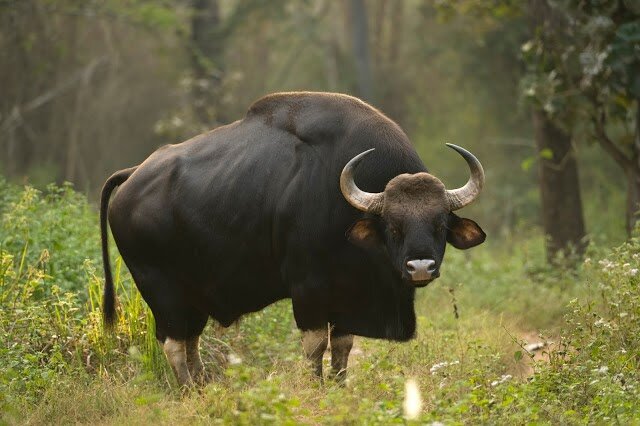
- Location: Native to South and Southeast Asia
- In India, they are found in Nagarhole, Bandipur, Masinagudi National Parks and BR Hills.
- Conservation Status:
- Vulnerable in IUCN Red List.
- Included in the Schedule I of the Wild Life Protection Act, 1972.
- Important Facts:
- It is the tallest species of wild cattle found in India and largest extant bovine.
- Recently, the first population estimation exercise of the Indian Gaur (Bison) was carried out in the Nilgiris Forest Division, Tamil Nadu.
- Recently, the conservation breeding of Gaur was started at Mysuru zoo under the conservation breeding programme of the Central Zoo Authority (CZA).
- Threats:
- Food Scarcity: Due to the destruction in the grasslands, planting of commercially important trees, invasive plant species and indiscriminate grazing of domestic animals
- Poaching: For their commercial value as well as due to the high demand of gaur meat.
- Habitat Loss: Due to deforestation and commercial plantations.
- Human-Animal Conflict: Due to living in proximity with human habitations.
- Location: Native to South and Southeast Asia
Rajiv Gandhi Khel Ratna Award
Why in News
For the first time five sports persons will be receiving the Rajiv Gandhi Khel Ratna on the occasion of the National Sports Day on 29th August.
Key Points
- 27 sports persons have also been finalised for the Arjuna Award while five coaches will receive the Dronacharya Award.
- Ms. Rani will become only the third Indian hockey player after Dhanraj Pillay and Sardar Singh to receive the Khel Ratna.
- Shri Mariyappan T. is the only third Indian para-athlete to be awarded the Khel Ratna award, after former Paralympic medallists Devendra Jhajharia and Deepa Malik.
- Rajiv Gandhi Khel Ratna Award is the highest sporting award given by the Ministry of Youth Affairs and Sports for the spectacular and most outstanding performance in the field of sports by a sportsperson over a period of four years.
- The award comprises a medallion, a certificate, and a cash prize of Rs 7.5 lakh.
- The National Sports Day is observed every year across India on 29th August to mark the birth anniversary of the legendary hockey player Dhyan Chand who was born on 29th August 1905.
Tattoo Sensor for Monitoring Health
Why in News
Recently the scientists from Indian Institute of Science, Bangalore have fabricated a skin conformal tattoo sensor about 20 micrometre thick.
Key Points
- The scientists were working on wearable sensors that can retract information from the human body using its skin (largest organ of the human body).
- Features: The tatto sensor promises continuous monitoring of vital health parameters of an individual, like pulse rate, respiration rate, and UV rays exposure, skin hydration level, glucose monitoring, and so on.
- It is non-invasive and does not interfere with the daily activities of the user.
- The sensor has a fast response and follows easy fabrication steps and can be patterned into any shape and size using a laser.
- Benefit: The sensor serves as a single conduit for sensing respiration rate and pulse, dispensing with the need of mounting multiple sensors.
- It has the potential to replace rigid and bulky health monitoring devices.
Dragonfly Festival
Why in News
The first-ever State Dragonfly Festival, also known as Thumbimahotsavam 2020 will be organized in Kerala jointly by the World Wide Fund for Nature (WWF)-India State unit and Society for Odonate Studies (SOS).
Society for Odonate Studies (SOS)
SOS is a non-political, non-profit organization formed to impart knowledge to the public on the insect order of Odonata (which comprises dragonflies and damselflies) and to conduct scientific studies, with the objective of conservation of the species and their habitats.
Key Points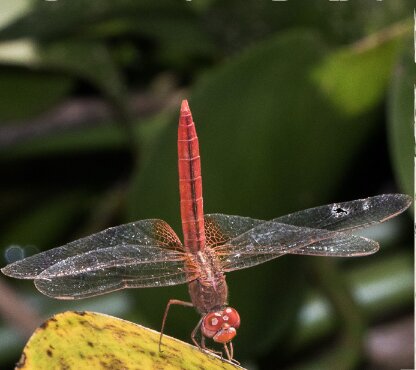
- It will be the part of National Dragonfly Festival being organised by the WWF India, Bombay Natural History Society & Indian Dragonfly Society,
- The third edition of the National Dragonfly Festival was organized online in August, 2020.
- It aims at building awareness about the importance of dragonflies and damselflies and the need to conserve them.
- Dragonflies act as important bio-indicators of the ecological health of an area.
- The festival will consist of training resource persons, webinars, and competitions.
- The festival will also provide an opportunity to people to undertake citizen science projects in their backyards during Covid-19 restrictions.
- Some specific target groups for this festival include zoology teachers, members of biodiversity management committees, eco-clubs, Forest Department, people from ecotourism activities etc.
Harit Path Mobile App
Why in News
Recently, the National Highways Authority of India (NHAI) has developed a mobile App, ‘Harit Path' to facilitate creation of Green Highways across the country.
Key Points
- Aim: The App will help to monitor location, growth, species details, maintenance activities, targets and achievements for each and every plant.
- Monitoring: In order to track the growth and health of the plants, photographs along with data of the plants captured using Harit Path App shall be uploaded every 3 months on NHAI’s Artificial Intelligence powered Big Data Analytics platform – Data Lake.
- Accountability: Highway contractors shall be accountable for proper upkeep and maintenance of the plantation and liable to replace the missing/dead plants.
- Payment: Performance and growth of the plants shall be linked to the payment to the contractors for this work.
- Harit Bharat Sankalp: Recently, NHAI has completed 25 years of its service, to commemorate this it has undertaken ‘Harit Bharat Sankalp’ a nation-wide plantation drive.
- Under this initiative, NHAI planted over 25 lakh plants in 25 days along the stretches of the National Highways between 21st July to 15th August 2020.

